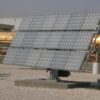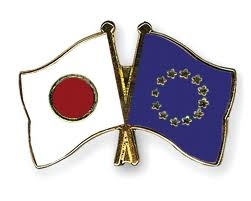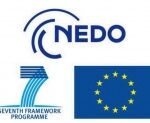PV Insider, August 16th, 2010
Italian legislation has so far left CPV out in the cold. But that is set to change next year writes Jason Deign with the introduction of feed-in tariffs that could create an important new market for the industry.
Italian legislation has so far left CPV out in the cold. But that is set to change next year writes Jason Deign with the introduction of feed-in tariffs that could create an important new market for the industry. By Jason Deign in Barcelona Back in 1886 an Italian Alessandro Battaglia filed the first patent for a ‘multiple solar collector’ in Genoa. After such an auspicious start however Italy has done little to favour CPV… until now.
To date CPV has conspicuously been left out of the scope of feed-in tariffs (FiTs) that have allowed PV in general to reach levels that could surpass the gigawatt scale next year according to the European Photovoltaic Industry Association. But next year CPV will also get a look in. “Until this year there weren’t any FiTs for concentrated but tariffs were very good for standard PV ” says Andrea Antonini head of research and development at module maker CPower. “There wasn’t any space for concentrated.” However thanks in part to lobbying by CPower and other industry members new legislation coming into effect in January will see CPV being awarded a FiT of between €0.28 and €0.37 per kilowatt-hour depending on the size of the installation. The tariffs are only available to public-sector or commercial projects not private individuals and the higher FiTs will be awarded to smaller installations (of less than 200 kW). There is a 200 MW cap but as Roberta Campesato head of the Space Unit at Italian cell manufacturer Cesi says: “That is a huge amount for CPV of course.” Operators waiting in anticipation The legislation could reverse the current situation in Italy where “now there is no market ” says Antonini. Certainly a number of operators and suppliers are looking forward to 2011 with anticipation. CPV leader Guascor which has been involved in the Italian market since 1998 has two fixed-structure projects totalling 10.5 MW on course for completion by the end of 2010 through its subsidiary Guascor Solar Italia. See recent Guascor Foton Executive Viewpoint. The first is a 6 MW plant in the coastal town of Sabaudia in the Lazio region. It will have 28 380 polycrystalline modules and an annual output of 8 100 000 kWh. The second plant will be a 4.5 MW installation in Gela Sicily which will have 16 362 polycrystalline modules and an annual output of 6 975 000 kWh.
The company says it currently has a pipeline of projects totalling 70 MW in Italy. Most of these are in Sicily where Guascor last year signed an agreement with the regional government for the development of 180 MW of CPV power. “In the long term we have our sights set on Italy ” confirms Alatz Aurtenetxe general manager of Guascor Foton. “There are other markets such as North Africa but they are moving at a different speed.” Industry confident Other industry sources are similarly confident that CPV will flourish in Italy although Cesi’s Campesato believes it could take a year or so for suppliers to gear up: “I think that Italian companies will start up not in 2011 but after then. “Perhaps only one company for low-concentration photovoltaics is market-ready. Others need another year for certification of their products.” In addition she says: “At the beginning installations will be small because they are paid better—there are better tariffs for smaller installations—and also because the final customers will want to be sure that the performance (of the technology) is good. “For the first year we will have a lot of small operators but if CPV demonstrates its potential then Italy could be an important market.” It is certainly one that CPower is hoping to take advantage of. “We are going to start with the Italian market ” says Andrea Antonini. “I think it will be an attractive market. We are Italian and we prefer to stay with the internal market for now.” Antonini adds that CPower has shown its products “not to many people” but has attracted attention from standard PV operators. The company has already had requests for quotations on private-sector funded installations totalling hundreds of kilowatts he says. Good timing Campesato adds that Italian electrical utilities are among the businesses currently interested in the market and believes that within three years “we can have a very huge market.” For Emerging Energy Research analyst Reese Tisdale the introduction of Italian FiTs at a time when the Spanish government for one seems to be gradually scaling back support for CPV is significant. “PV is going crazy (in Italy) but there’s not a lot of CPV action going on. And given the terrain CPV would work there. “The one thing about Spain is that CPV operators have been able to take advantage of the PV tariff. Now that it is coming to an end Italy is the next step on the gravy train. It all hinges on the tariffs.” Antonini agrees. “We were just asking for the FiT. We do not ask for anything more ” he says. Nearly a century and a quarter since Battaglia gave Italy a lead in CPV the nation may once more be on the verge of playing a key role in the evolution of the industry.














